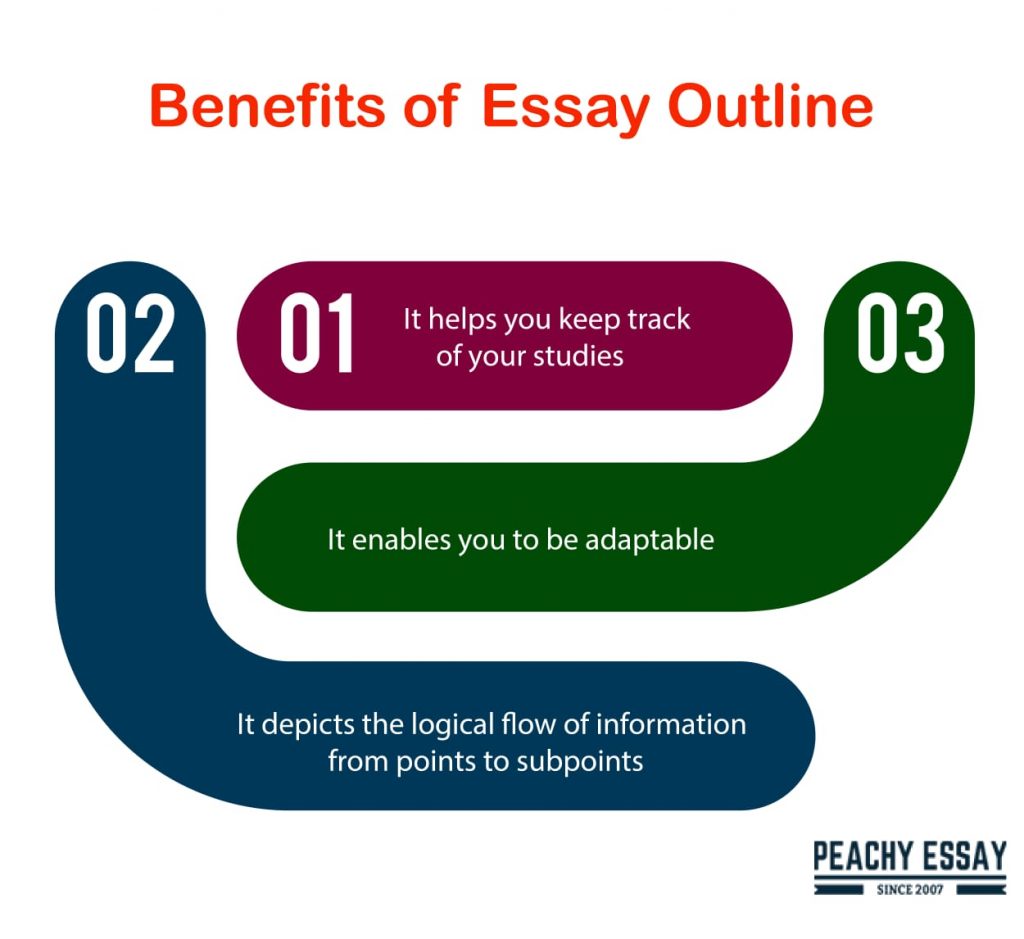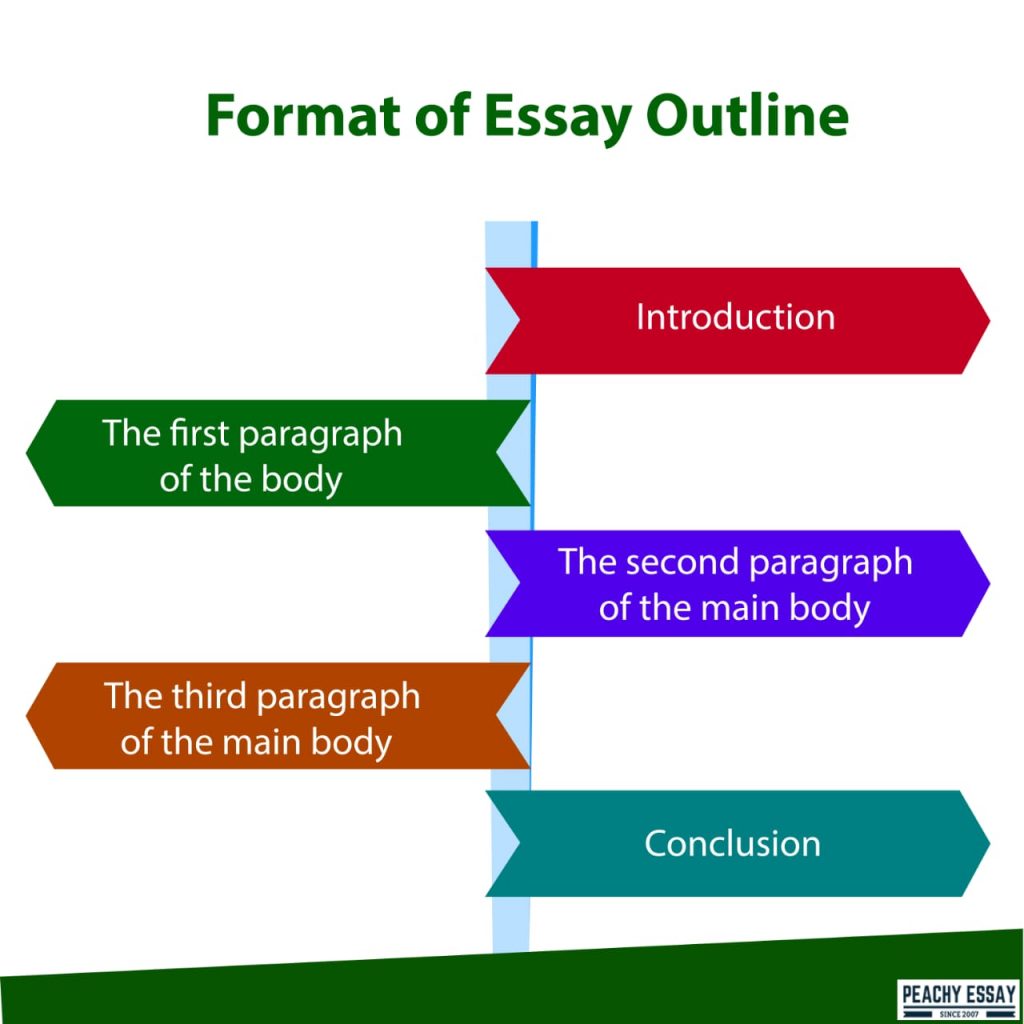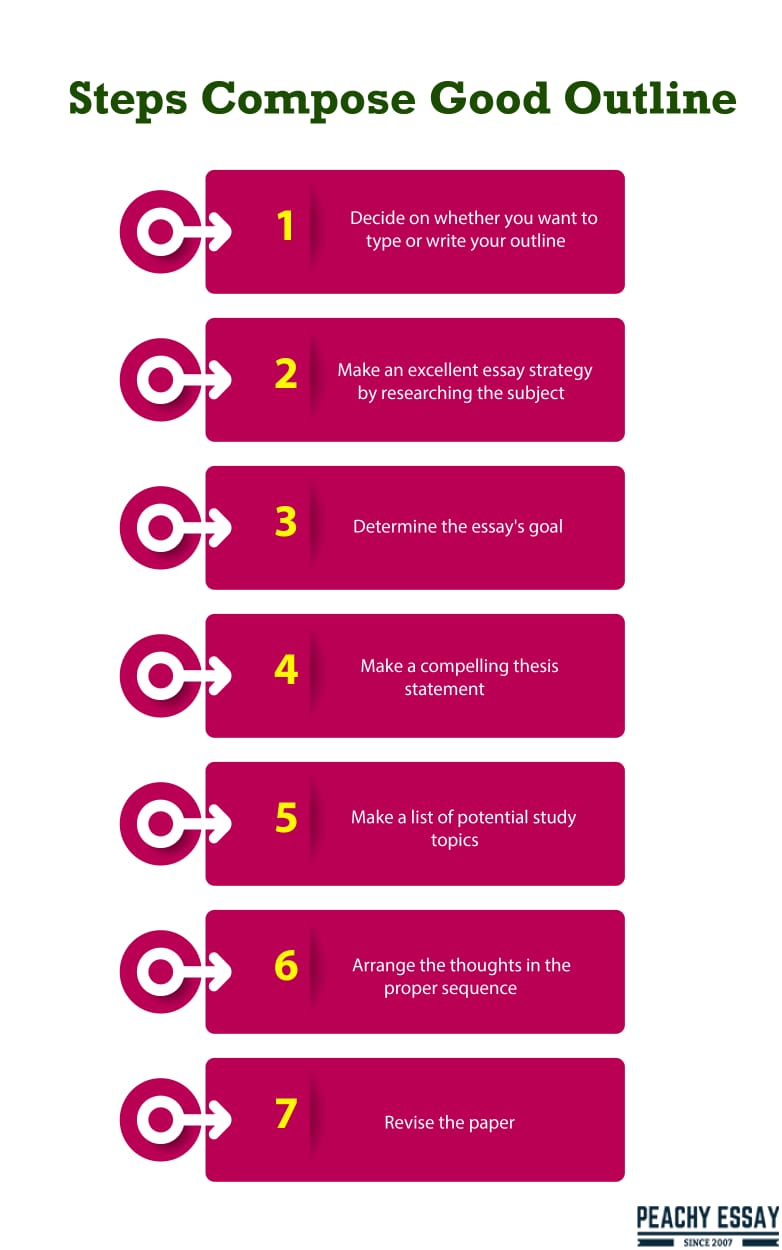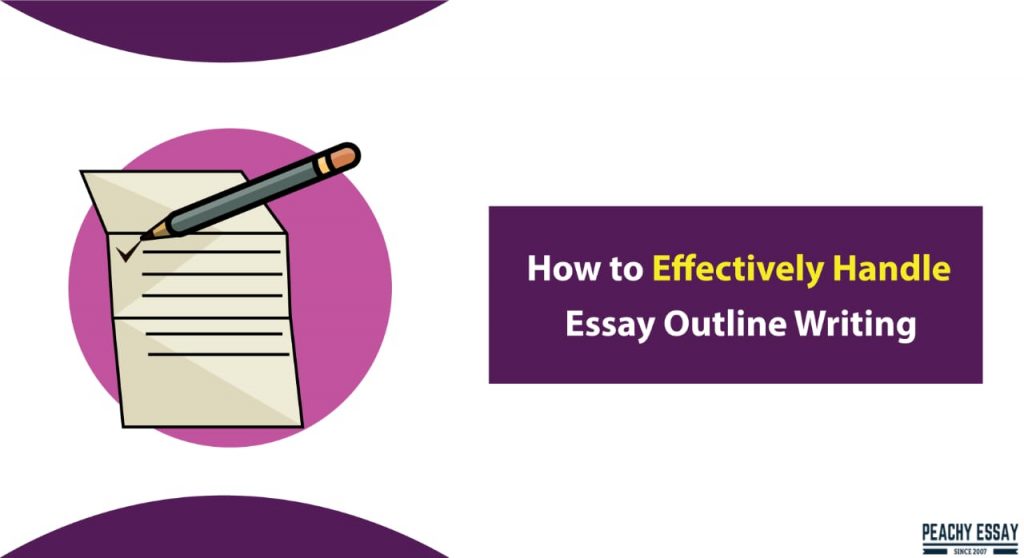An essay outline is a method of organizing the framework of your paper before you begin writing it. It entails composing concise summary words or phrases for each issue you’ll discuss in each paragraph, providing you with a sense of how your argument will progress.
Before you begin writing an essay, you may be requested to submit an essay plan as a distinct assignment; but, even if you aren’t required to do so, creating an outline as part of your writing process is a good idea.
What is an Essay Outline?
An essay outline serves as a guide for writing a prose essay. Essay outlines give you a framework for what you’ll say in each section and paragraph of your paper. Making outlines is an important part of writing different essays and research papers. The structure and outline can help even narrative essays, which narrate stories rather than making logical arguments.
The core idea of an essay, known as the thesis statement, is anchored in an outline, which drives the essay writing process. It also organizes the body paragraphs, which make up the bulk of your essay, and includes an introduction and a conclusion to lead your reader into and out of the essay.
Purpose of an Essay Outline
As you progress through the writing process, an essay or research paper outline will keep you organized and focused on your core topic. Here are the benefits of an essay outline.

It helps you keep track of your studies
You can filter through your research or reasoned ideas and discover the right place to incorporate them in an essay by creating an excellent outline. Likewise, you can assess the power of your thesis statement by organizing your facts in this manner. You’ve undoubtedly chosen a good thesis if you find yourself stuffing your outline with evidence to back up your main claim. If not, you might want to think about it again.
It depicts the logical flow of information from points to subpoints
The structure of most outlines is alphanumeric. They alternate between Roman numbers, capital letters, Arabic numerals, and lowercase characters to form points and sub-points. Decimal outlines and staggered bullet points are two other essay outline designs.
It enables you to be adaptable
In your formal outline, you can use whole phrases or write shorthand. An outline is a tool for developing the substance of your essay and finding a logical sequence, so it just has to make sense to you.
What is the Format of an Essay Outline?
Here is the format of an essay outline.

Introduction
The first paragraph of your essay should introduce the issue, provide background information that will help readers comprehend your argument, explain the evidence you will present, and express your thesis. Your thesis should be a succinct explanation of your essay’s key idea.
The first paragraph of the body
Each body paragraph should focus on a distinct concept or piece of evidence that backs up your thesis. Begin each paragraph with a topic sentence that introduces the paragraph and connects it to the thesis clearly and succinctly. Then, support your claims using supporting points, examples, research, statistics, studies, and text citations in the body paragraphs.
The second paragraph of the main body
This paragraph should follow the same pattern as the first, but it should focus on a separate piece of information. Ensure the opening line of this paragraph serves as a topic sentence that connects to the essay’s overall theme. Then, continue to back up your main thesis with examples and related concepts.
The third paragraph of the main body
This paragraph should be used to acknowledge any counter-arguments to your thesis. Before showing why your thesis is stronger, you should usually offer a concise case for any counterarguments. Presenting facts and looking at a topic from all sides will give you credibility and help you acquire a reader’s trust.
Conclusion
Finish with a conclusion paragraph that restates your thesis and summarizes all of your body paragraphs’ points. An excellent conclusion sentence will tie up the concepts of the entire essay in a memorable fashion rather than introducing new facts or arguments.
How do you Create an Effective Essay Outline?
An excellent outline can be written in a variety of ways. We’ll provide you with some pointers to assist you to come up with the motivation to write the outline yourself. Each good outline is composed using multiple steps:

Decide on whether you want to type or write your outline
Writing down the ideas could take a long time. It has been proven, however, that writing down your thoughts helps you digest them more effectively. You can also use diagrams or examples to help you visualize your essay’s structure. Finally, typing is another means of communicating and retaining ideas.
Make an excellent essay strategy by researching the subject
When it comes to creating a strong outline, conducting research is a must. If you type in keywords related to your essay’s topic, you will be presented with various papers and publications that will assist you in writing your paper. When writing a research paper, don’t forget to make a source list.
Determine the essay’s goal
As soon as you’ve decided on an opinion, write down the key research goal in an outline. It might be a question or a thesis statement that will help you and your reader connect. It would be best if you gave the reader specific examples of evidence. It will be possible to concentrate on the essay’s core idea if you have a goal.
Make a compelling thesis statement
It might be a broad concept that will lead the reader through the full process of writing the paper. It should be no more than two or three sentences lengthy, logical, and completely original. It means that it should sound new to you, first and foremost, so that no one else has heard of it.
Make a list of potential study topics
It means you should make a rough draft of your paper but not go into too much depth. Then, after brainstorming, describe the primary assertions of your future paper to create a frame. Then, it will be feasible to go back and polish your points when composing a paper.
Arrange the thoughts in the proper sequence
Another important step in drafting the essay is organizing the thoughts into a logical format. Make a point of summarizing each point so you can remember what material to include next.
Revise the paper
It’s also crucial to proofread the paragraphs and remove any content that isn’t necessary or relevant to the essay’s goal. You can add more by paraphrasing the paragraphs so that they accurately focus on the key theme.
Tips for Writing an Essay Outline
The following pointers are crucial for your essay’s outline.
Recognize the assignment’s purpose
You should ask yourself why the project was given and what you want to get out of it while constructing the outline for your essay. What do you want the reader to take away from it?
Carefully read the assignment instructions
The assignment’s instructions are quite important. All of the keywords should be identified and highlighted. Make sure you understand them and what the instructor expects of you. If you’re having trouble understanding something, seek clarification.
Creating an essay topic
Even while an essay outline can help you develop and organize your thoughts, there are several vital prewriting phases to consider. First, make a list of your ideas and organize the ones that are related together. You may try freewriting for 5-10 minutes and writing down whatever comes to mind.
Keep the target audience in mind
Another point to remember when learning how to compose an essay outline is to consider the audience. This is a common occurrence in academic writing, particularly when addressing a certain group of listeners or readers. If it’s an assignment, you’ll need to consider your supervisor’s expectations for the project. This will assist you in determining the most effective strategy to outline your work.
Create a thesis statement for your paper
This should happen after reading all of the primary sources you’ll be using in your essay. It’s critical to create a working thesis statement and keep in mind that it can evolve until it’s perfect. Pre-writing your outline has the advantage of allowing you to create multiple drafts until you are completely sure that you have the right idea. We’re still working on creating an amazing essay outline that will be crucial during the writing process.
What is the Ideal Length for an Outline?
This is highly dependent on the type of essay you’re writing and how sophisticated your arguments are. Perhaps you’re composing a five-paragraph essay. So, as long as you include the primary idea, supporting elements, and a general conclusion, your outline can be a few lines long.
You’ll need a more extensive outline for an argumentative essay or a university essay, with the same components as a shorter outline but with extra information, such as evidence and explanation for your supporting views. This should be between one and two pages long.
When is it Appropriate to Create an Outline?
Outlining isn’t something you have to accomplish at a certain point in the writing process. It all depends on how much research is required, how knowledgeable you are about the issue, and whether or not you have a specific theme in mind. So you could be able to quickly draw up an outline after being given an essay subject, or you might need to undertake some research to come up with a thesis or viewpoint to approach the issue you’ve been given first.
Outlining has the advantage of assisting you in determining whether you need to conduct additional research, refine your thesis, or learn more about the issue. If you’re having trouble coming up with an outline that includes supporting arguments, evidence, and explanation, you likely need to conduct extra reading to back up your thesis or learn more about the topic before forming an opinion.
Is it Possible for me to Update my Outline?
An outline, among other things, aids in the conceptualization of your essay’s logic or flow. As a result, updating your blueprint is an inevitable aspect of the procedure. You might even have to add to, change, or rearrange your outline after sharing it with someone for a review or criticism.
You can also consider if the evidence you give for your supporting claims comes from enough credible sources. Again, your educator may be able to provide you with comments on this and suggest further resources to include.
Effective note-taking, by the way, can make the process of outlining a lot easier. When it comes to outlines, the only real guideline is to write one before you start writing your complete essay draft!
Outline Types and When to Use Them
There are two types of outlines in general: subject and sentence outlines. When you number the outlines, you’ll have what’s known as an alphanumeric outline.
Topic outline
A topic outline entails assigning a header to each paragraph you’ll be writing. For example, if you’re writing an essay about whether educational institutions should open in the face of a global pandemic, your outline might look like this:
The main idea: is to reopen schools and allow for in-person instruction.
The first supporting idea: the vaccine is now available.
Second supporting idea: The most effective learning is done in person.
Supporting idea 3: Numerous safety precautions can be taken.
Conclusion: schools should reopen for in-person instruction.
Sentence outline
A sentence outline means that you’ll follow the same flow as before, but you’ll make sure that each header becomes a whole sentence that describes what you’re getting at. Consider the following scenario:
The main idea: schools should reopen in 2021 to allow for face-to-face instruction.
Supporting idea 1: It’s time for schools to reopen because vaccines are now available, and everyone who attends can obtain one to ensure that everyone is safe.
Supporting argument 2: Because in-person instruction is more successful than online instruction, students will make up for any learning losses that may have happened if schools reopen.
Supporting argument 3: As we learn more about how Covid19 spreads, schools may better prepare and take all necessary safeguards to ensure that the atmosphere is safe for kids to return to class.
Conclusion: It is now safe to reopen schools for in-person instruction.


